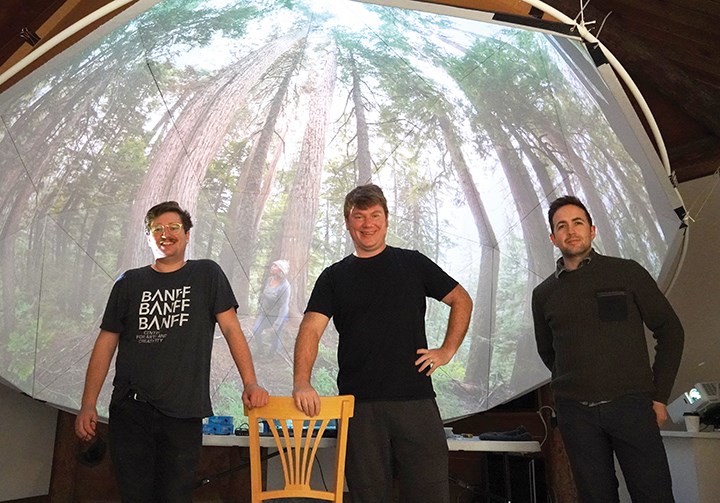Art is often created for its own delightful sake. But sometimes it is used to call attention to an urgent situation. It’s in the latter vein that the Sunshine Coast Arts Council (SCAC) has mounted its new exhibition, Our Ancient Forests, at the Doris Crowston Gallery in Sechelt.
The urgent situation concerns a few dozen hectares of Mount Elphinstone forest, technically known as Block A87126. The logging rights are controlled by BC Timber Sales. Environmental groups fighting to preserve the area are calling the area the Dakota Bear Sanctuary, for the many black bears believed to roam and den there.
Of at least equal concern are the trees themselves, which include massive, culturally modified yellow cedars that have been used ritually by the Squamish and shíshálh Peoples for centuries. Some of the trees are believed to be among the oldest in Canada, standing for at least a millennium and possibly for as many as 1,800 years. Despite its inherent majesty and obvious significance on many levels, the block could be auctioned off for logging early next year.
SCAC director/curator Sadira Rodrigues is adamant to point out that the Our Ancient Forests exhibition is not a blanket protest against logging. “How could we say that? Our community is reliant on that industry,” Rodrigues said.
“This is about the protection of two per cent of our remaining forests. Just two per cent.”
The show is a collaboration among SCAC, Living Forest Institute, Elphinstone Logging Focus, and Vancouver’s The Only Animal, and brings together a broad mix of media. Some of the monumental trees in jeopardy are featured in large photographs by Mark Benson, Ross Muirhead, and Shel Neufeld. There are baskets and traditional hats crafted from yellow and red cedar by Shy Georgeson and Jessica Silvey. A Derek Georgeson carving is prominently displayed.
Using tree branches and other media, Rob Studer has brought some deeply metaphorical pieces that speak to suffering humans impose on the earth and each other. There’s a 16-mm film and prints made in a rare method called phytogram, using plant material from the Dakota forest. There’s also video and a virtual-reality headset experience to be had using images from the threatened area.
Certain to get much attention at the exhibition is a 10-minute, three-dimensional film projected into the concave side of a geodesic dome mounted in the smaller room of the gallery. The film features Squamish weaver, ethnobotanist and educator Cease Wyss, speaking as she takes us on a walk through the forest. The project was co-directed by Olivier Leroux and Damien Gillis.
“I really felt we needed a visceral experience to take [viewers] as close as we can to being in that place,” Gillis told Coast Reporter.
“We have a precious view of these ancient forests that are, basically, a treasure. They’re like a natural cathedral.”
There will be online dialogues with the artists on Friday, Nov. 13 and Saturday the 14th. On the closing day, Sunday, Nov. 22, there will be a meet the artists opportunity at the gallery.



